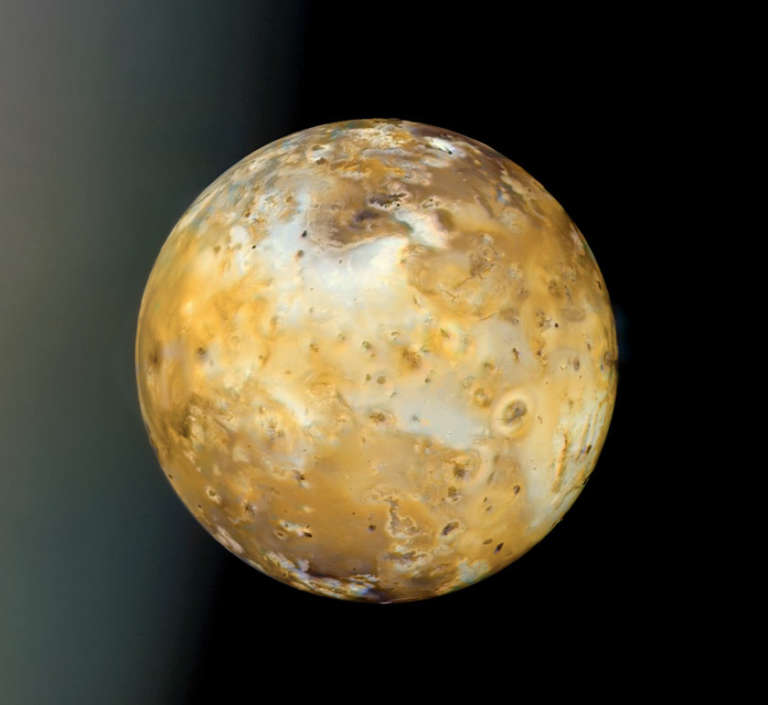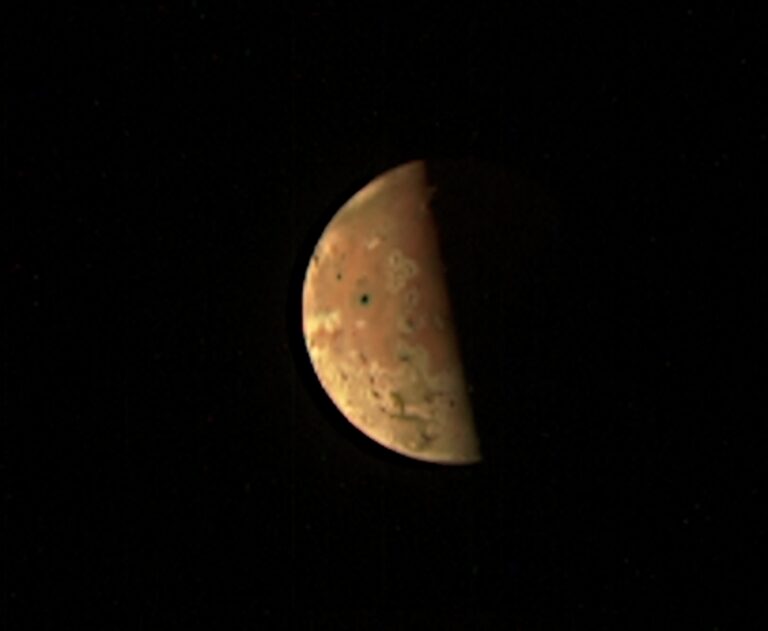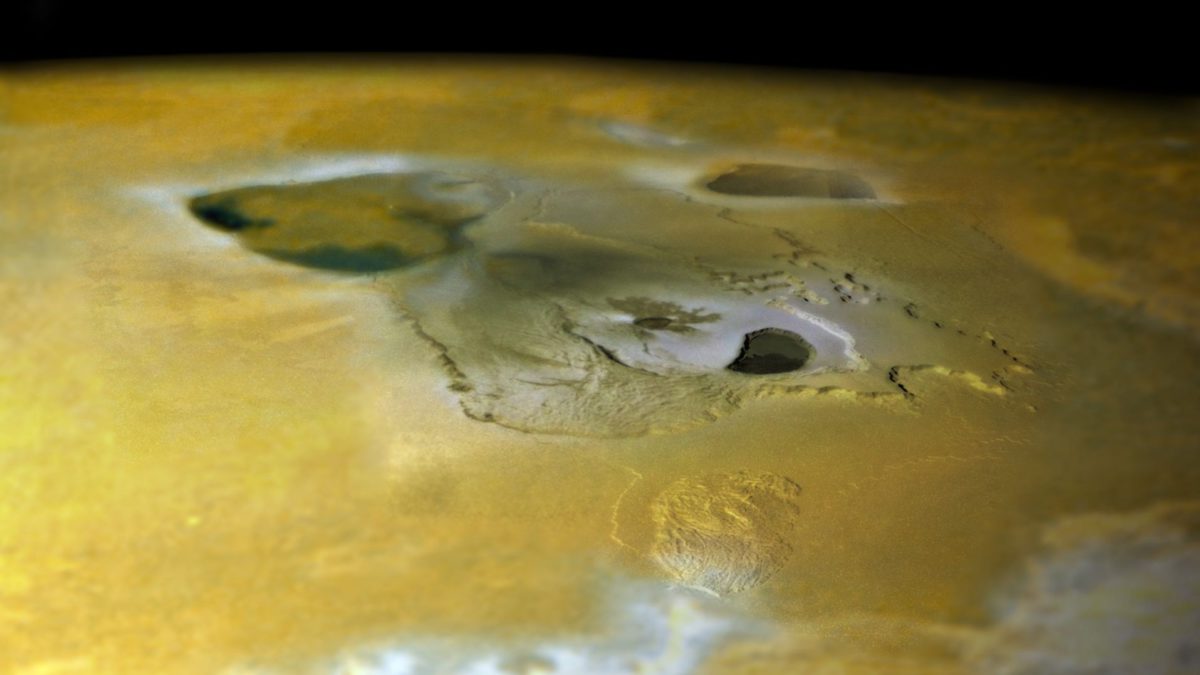Jason Davis • Jan 24, 2023
What to expect from Juno's Io flybys, and why a proposed mission there would tell us more
Get ready for the year of Io.
NASA’s Juno spacecraft, now in its extended mission at Jupiter, has been turning its instruments away from the gas giant and toward the planet’s moons. During the past two years we’ve been treated to stunning new views of Ganymede and Europa, along with new scientific data about both moons.
Io is next. Throughout 2023, the spacecraft’s 38-day orbit around Jupiter will nudge it closer and closer to the volcanic moon until it passes Io on Dec. 30, 2023 and Feb. 3, 2024 at a distance of just 1,500 kilometers (930 miles).
The flybys will provide beautiful new perspectives of the ochre-colored moon, which hasn’t been explored in detail since NASA’s Galileo spacecraft orbited Jupiter from 1995 to 2003. Juno will also study how heat is distributed across the moon, and collect data on whether or not a magma ocean lies beneath the surface.
As exciting as these results might be, Juno has limited instrumentation that was designed specifically to study Jupiter. A proposed Io mission would send a spacecraft even closer to the moon, armed with science instruments that could unlock Io’s secrets.

Juno’s year of Io
Juno arrived at Jupiter in July 2016, entering a 53-day orbit around the planet. This keeps Juno out of Jupiter’s powerful radiation field most of the time, except for close flybys to collect science data.
Jupiter bulges at its equator, creating an imbalance in its gravity field that nudges Juno on each flyby. Over time these nudges have reshaped Juno’s orbit so that it crosses the orbits of Jupiter’s three innermost Galilean moons. The mission team was able to tweak the timing of Juno’s orbit crossings to give the spacecraft close encounters with each moon. Each encounter also shortened the duration of Juno’s orbit.

First came Ganymede in 2021. Then came Europa in 2022. Now it’s time for Io, the Solar System’s most volcanic moon, to get a turn.
On Dec. 15, 2022, Juno flew past Io at a distance of 64,000 kilometers (40,000 miles). The flyby was close enough to capture some volcanoes and surface features, and the view will only get better as Juno gets closer and closer with each 38-day orbit.

Like Earth’s Moon, Io is tidally locked, meaning the same side always faces Jupiter. JunoCam, Juno’s wide angle camera, will capture the antijovian side of Io — that is, the side facing away from Jupiter — on each flyby. That will allow scientists to search for surface changes.
“We will be able to look for changes from the volcanoes, which are going to be really fun to look at,” said Candy Hansen, a senior scientist at the Planetary Science Institute who leads the mission’s JunoCam investigation.
When Juno makes its closest approaches in December and February, the spacecraft will turn its radio antenna towards Earth to perform an important science experiment. As Io’s gravity tugs on the spacecraft, the spacecraft’s signal will shift. Scientists will be able to decode these shifts to get a rough idea of how magma is distributed beneath Io’s surface.
“Is it in subsurface patches, or is there a whole liquid mantle, so to speak?” said Hansen. “We believe with the gravitational data that we can get on those two, 1,500-kilometer flybys that we will be able to tell the difference.”
Having the antenna pointed at Earth for the radio experiment will limit what JunoCam can see. However, after close approach, Io’s subjovian side — the side facing Jupiter — will come into view at a distance of about 6,000 kilometers (3,700 miles). The angle between Juno, Io, and the Sun will be about 90 degrees, creating a beautiful half-lit view of Io for JunoCam to capture.
The Io Volcano Observer
Although Juno will collect valuable data during its upcoming flybys, only a dedicated mission to Io can answer key questions scientists have about the moon.
The proposed Io Volcano Observer, or IVO, is a spacecraft that would orbit Jupiter and make repeated close flybys of Io. IVO would encounter the moon 10 times within three-and-a-half years. An extended mission could give it another 10 encounters over two years.
Like Juno, IVO would use its radio transmitter to help scientists determine whether Io has a subsurface magma ocean. Whereas Juno’s closest flyby will be at 1,500 kilometers, IVO will get up close and personal at 300 kilometers (190 miles), giving it greater insight into what feeds the moon’s volcanoes.
Io is caught in a tug-of-war between Jupiter, Europa and Ganymede, which heats its interior and sends lava spilling onto the surface and showering into space. Whether that lava starts as magma deep within the moon or in pools or oceans near the surface is unknown.
“The big question about Io is, how does it work?” said Alfred McEwen, the mission’s principal investigator and a regents professor at the University of Arizona.
The gravitational forces on Io are so immense, the moon’s surface flexes up to 100 meters (330 feet) as it orbits Jupiter. Without this strain, Io would be as geologically dead as Earth’s Moon, said McEwen.
IVO would measure Io’s magnetic signal and the composition of gases coming from the surface. It would also measure lava temperatures, which requires a specially designed camera calibrated to keep Io’s volcanoes from overwhelming its detectors.
The mission would allow scientists to model how heat is generated and transported within Io. These models could be useful for studying the ancient Earth and Moon, as well as ocean worlds like Europa and Enceladus that are warmed by tidal heating.
“We can potentially learn something about the very early histories of other worlds, particularly Earth’s Moon, which is almost the exact same size and density as Io,” McEwen said. “There should be some close analogies.”

Io never disappoints
IVO can’t study Io unless it gets picked by NASA to become a mission. It has been proposed to NASA’s low-cost Discovery program three times. The mission was a Discovery finalist in 2020, but ultimately lost out to two Venus missions, DAVINCI and VERITAS.
Despite the setbacks, McEwan said that the IVO team plans to try again, this time through NASA’s mid-budget New Frontiers program. Mission proposals will be due as early as April 2024, and Io is one of six allowed science destinations.
In the meantime, Juno will provide some excellent Io public relations as it dives past the volcanic moon this year and next.
“One thing about Io is that it never disappoints,” said McEwen. “Anytime you observe Io, it's doing something interesting.”
Support our core enterprises
Your support powers our mission to explore worlds, find life, and defend Earth. You make all the difference when you make a gift. Give today!
Donate

 Explore Worlds
Explore Worlds Find Life
Find Life Defend Earth
Defend Earth

